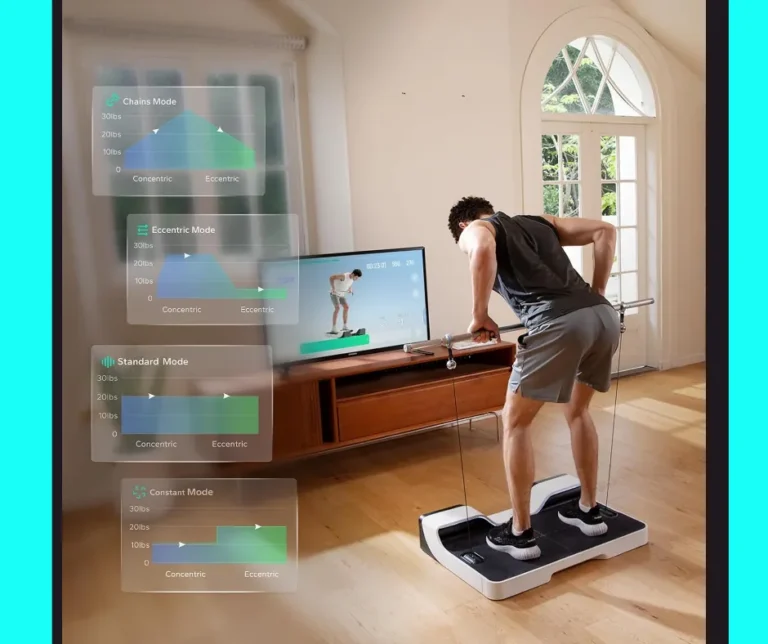Ensure confidence in your workout routine
Safely ramp up exercise intensity: How to reboot your workout routine
This article will show you How to Ensure confidence in your workout routine and Reboot Your Workout Routine and Stick With It Safely ramp up exercise intensity. You can do this by increasing the duration of each session, or you can increase the frequency with which you train.
Either way, it’s important that you don’t overdo it when you first start a new program. If you push too hard at once, you could end up injuring yourself.
Instead, ease into things slowly so that you get used to exercising more frequently without causing any problems. This will help ensure that you stick with your plan for longer than just a few weeks before you have to make changes again.
If you want to change how often you work out, try doing one set per day instead of three sets in one training session. Doing fewer reps also means that you won’t be as tired after working out.
You should always listen to your body during workouts. If something hurts while you’re lifting weights, stop immediately. Don’t force through pain; if anything is wrong, take some time off until you feel better.
You may need to adjust your diet to support your fitness goals. For example, eating plenty of protein helps build muscle mass, but not all proteins are created equal. Some contain extra calories, making them less effective for weight loss.
The best sources include lean meats like chicken breast, fish, eggs, beans, nuts, seeds, tofu, and low-fat dairy products such as milk and
What is high-intensity exercise?
High-intensity training and weighted resistance exercises are two types of exercise that require an increased amount of energy from your muscles. They both involve short bursts of intense activity followed by periods of rest.
In general, these activities burn about twice as many calories as moderate cardio sessions. However, they aren’t suitable for everyone because they put stress on certain joints and tendons.
They might cause injuries if done incorrectly. So, use caution when performing these kinds of exercises.
When you perform high- intensity exercise, you’ll likely experience greater fatigue than usual. That’s why it’s important to gradually introduce these types of workouts into your schedule.
This gradual approach allows your body to adapt to the demands placed upon it. As long as you keep your heart rate elevated throughout the entire workout, you shouldn’t encounter any issues.
However, if you find that you’re struggling to complete even one rep, then you probably need to back down slightly.
It’s possible that you’ve been pushing yourself too far. Instead of trying to go harder, focus on improving technique.
For instance, if you struggle to lift heavy objects correctly, consider using lighter ones. Or, if you’re having trouble completing repetitions, concentrate on form rather than speed.
These adjustments will allow you to safely progress toward achieving your goal.
As mentioned earlier, there are several ways to boost your metabolism. One option involves adding strength training to your regimen.
High-intensity workout format
Boxing:
Three-Minute Round, One-Minute Rest Between Rounds
A boxing routine can provide numerous benefits. It strengthens your core, improves balance, increases flexibility, builds endurance, and burns fat. Plus, it doesn’t require special equipment or space.
To do this type of workout, stand facing away from a wall. Place your hands against the wall at shoulder width. Then, step forward and punch straight ahead. Repeat 10 times.
Next, turn around and repeat the same movements backward.
Tabata Drills & Exercises
High-intensity interval training (HIIP) is another way to increase your metabolic rate without spending hours in the gym each week. This method consists of 20 seconds of work followed by 10 seconds of rest repeated eight times.
If you want to try HIIP, start with Tabata drills first. These consists of four rounds where you alternate between 30 seconds of running/jump rope and 15 seconds of walking/crunches.
Afterward, add some weights to your routine. You should aim to complete three sets of 12 reps per set. If you feel like you have enough time left over after finishing all four rounds, then you can continue doing more weightlifting.
The key here is consistency. Don’t skip days or weeks. Stick with the program until you reach your goals.
High-Intensity Workouts That Drive Up Your Heart Rate
You don’t necessarily need to spend an hour working out every day to see results. In fact, most people who lose weight through diet alone only need to make small changes to their lifestyle.
But, if you really want to get serious about shedding pounds, then you may need to incorporate additional activity into your daily routine.
One example would be HIIT. High-intensity interval training has become increasingly popular among fitness enthusiasts.
Orangetheory Fitness
Orangetheory Fitness has a unique format that combines cardiovascular conditioning with functional movement patterns. The result is a total-body workout that targets every major muscle group.
Here’s what makes this type of workout so special: It incorporates elements of circuit training, kettlebells, yoga, Pilates, and more.
This combination creates a dynamic environment where participants can push themselves beyond their comfort zones. As a result, they’ll experience increased energy levels throughout the entire session.
In addition to burning calories, high-intensity workouts also help build lean muscle mass. And when combined with proper nutrition, these muscles burn even more calories as they grow stronger.
So, whether you prefer cardio or resistance training, incorporating both types of exercise into your weekly schedule could lead to faster weight loss.
Risks vs. rewards
The Risks and Benefits of Exercise
Exercise isn’t just for those looking to shed pounds; it can actually improve overall health. But before you jump on board, there are risks involved.
For starters, exercising too much can cause injuries such as stress fractures, tendonitis, and pulled ligaments. So, if you’re new to physical activities, stick to low impact exercises like swimming, cycling, and hiking.
Also, intense workouts can put extra strain on joints and bones.
Proper form is key to the safety and efficacy of any exercise.
Proper exercise form is important to avoid injury during strength training.
To ensure safe and effective lifting, follow these tips from experts at Bodybuilding.com:
• Use light loads—no heavier than 50 percent of one rep max.
• Keep your back straight while performing lifts.
• Avoid jerking motions.
• Perform slow repetitions.
• Focus on perfect technique rather than speed.
And remember: Even though exercise helps boost metabolism, it doesn’t guarantee weight loss.
The Benefits of Burpee Exercise
Burpee exercise is good for building core strength in all planes of motion. This includes improving balance, coordination, agility, power, and endurance.
It’s also great for toning abs, glutes, quads, hamstrings, calves, shoulders, arms, chest, triceps, biceps, neck, and back.
Plus, burpees have been shown to increase metabolic rate by up to 30%.
The burpee is more than just a single exercise It’s an essential component of many different routines. For instance, here are some examples of how you might use them in your own program:
1) Jump rope : Start out doing 20 jumping jacks followed immediately by 10 burpees. Repeat three times.
2) Squat thrusts : Stand tall with feet shoulder width apart. Bend knees slightly and lower body until thighs are parallel to floor. Then explode upward through hips and legs, driving heels toward buttocks. Land softly on toes and then spring off again. That’s 1 repetition. Do 12 reps per set.
3) Pushups : Begin standing upright with hands placed directly under shoulders. Lower torso down towards ground until elbows touch. Return to starting position. That’s 1 repetition. Complete 8 reps per set.
4) Plank variations : Lie faceup on mat with forearms flat on surface.
Create a follow-through plan
Create a dedicated home workout space where you’ll be able to perform each type of exercise safely and effectively.
You may want to consider investing in a pull-up bar, stability ball, medicine balls, dumbbells, kettle bells, yoga blocks, etc., so that you can complete most of your routine without leaving the house.
If you don’t already have equipment, check local stores, garage sales, thrift shops, online retailers, and classified ads for used items.
Make sure you have enough time to exercise. You should allow yourself about 45 minutes every other day.
If you work fulltime or attend school part-time, make sure you carve out sufficient free time to fit in your fitness regimen.
Don’t forget to drink plenty of water throughout the day. Water will help keep muscles properly hydrated and prevent dehydration which could lead to muscle cramps and fatigue.
Remember to stretch before and after working out. Stretching not only improves flexibility but reduces risk of injury.
How to Plan Your Exercise Routine Planning ahead is key when designing any kind of workout schedule. Here are four tips to get started:
Set realistic goals
Start small. If you’re new to exercising, start slowly. Choose one activity from this list and try it first. Once you’ve mastered that move, add another. And if you like what you see, continue adding activities as long as they feel comfortable.
Keep workouts short
Short bursts of intense physical exertion are better than longer sessions of moderate intensity.
What to expect when you return home
After completing your workout, rest at least 15 minutes before resuming normal daily activities. This allows your heart rate to slow naturally and helps avoid overtraining.
When planning your next session, remember to include exercises that target all major muscle groups.
Also, choose movements that challenge multiple joints simultaneously. These types of moves require greater coordination and balance, making them ideal for beginners who need extra practice.







